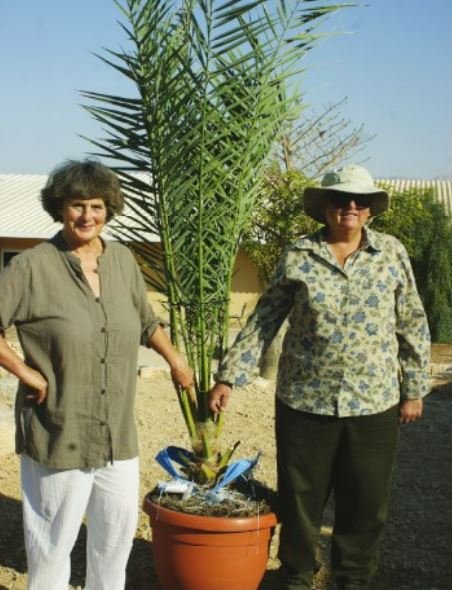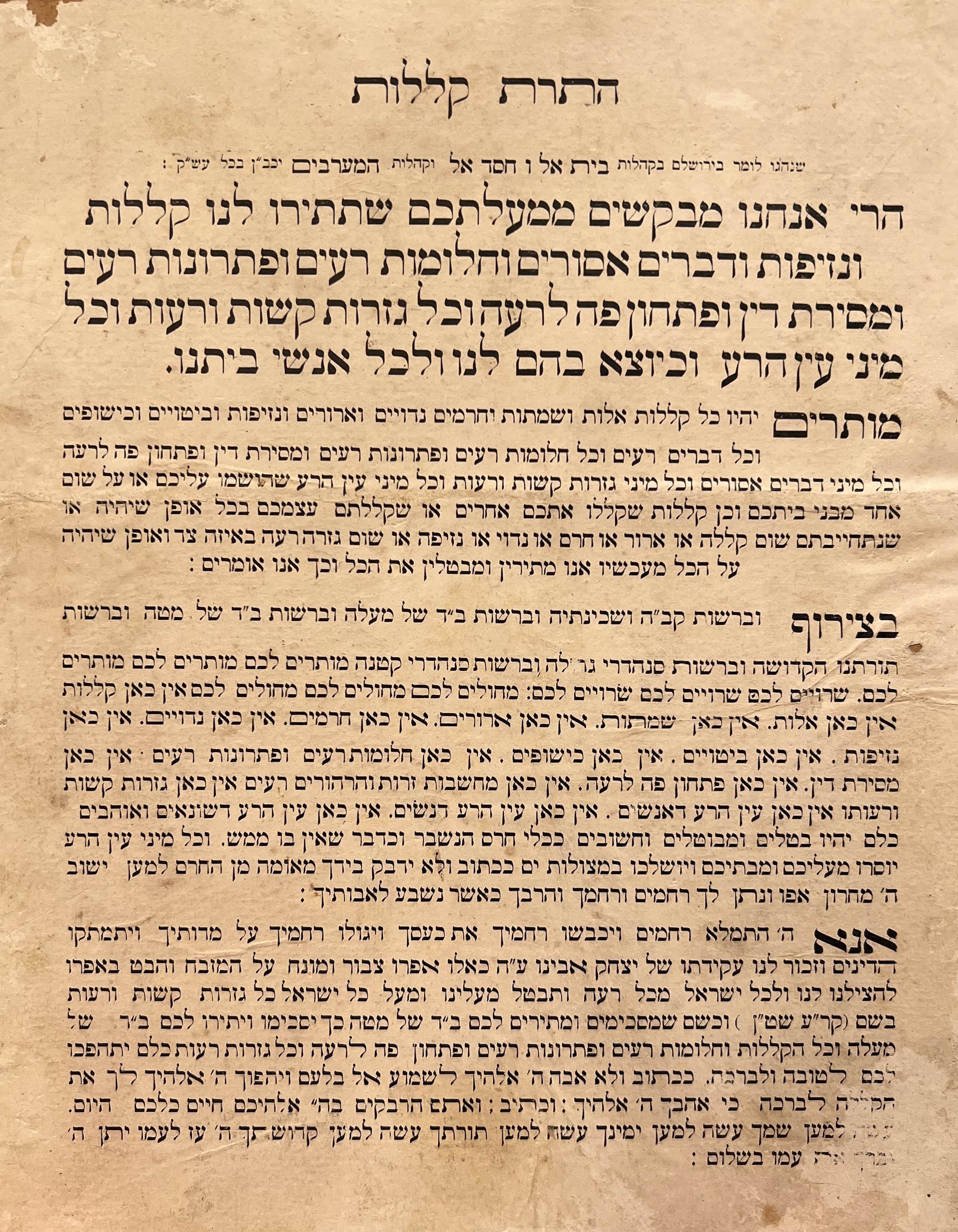נזיר יט, ב
מעשה בהילני המלכה שהלך בנה למלחמה ואמרה אם יבוא בני מן המלחמה בשלום אהא נזירה שבע שנים ובא בנה מן המלחמה והיתה נזירה שבע שנים ובסוף שבע שנים עלתה לארץ והורוה ב"ה שתהא נזירה עוד שבע שנים אחרות ובסוף שבע שנים נטמאת ונמצאת נזירה עשרים ואחת שנה
A story happened with Queen Helena. Her son went to war and she declared "If my son returns in peace from the war I will be a nezirah for seven years." Her son returned from the war and she was a nezirah for seven years. At the end of these seven years she went up to live in the Land of Israel, and Bet Hillel ruled for her that she must be a nezirah for another seven years [because Bet Hillel ruled that the time period of nezirut observed outside of Israel does not count.] At the end of the [second] period of seven years she became impure [which meant she needed to serve the entire period again], and so she was a nezirah for a total of twenty-one years...(Nazir 19b)
Queen Helena, Patron of the Second Temple
In this passage Queen Helena (died. c. 50 CE) becomes one of the few people identified by name in the Talmud as having become a nazarite. In fact she became a nazarite three times over. But there is a lot more to her story. Elsewhere in the Talmud (בבא בתרא יא, א) her son is credited with saving Jerusalem from famine (at least according to Rashi there). The Mishnah in Yoma (37a) records that the Queen dedicated a golden candelabra to the Temple, that was placed over the door which led into its the main courtyard. In addition she donated a tablet on which the section of the sotah (a woman suspected of adultery) was written.
The Queen in the Writings of Josephus
While the Talmud records a number of stories about Queen Helena, the great Jewish historian Josephus provided some additional information about her life, which corroborates some of the stories told about her in the Talmud.
About this time it was that Helena, Queen of Adiabene, and her son Izates, changed their course of life, and embraced the Jewish customs, and this on the occasion following: Monobazus, the king of Adiabene, who had also the name of Bazeus, fell in love with his sister Helena, and took her to be his wife, and begat her with child. But as he was in bed with her one night, he laid his hand upon his wife's belly, and fell asleep, and seemed to hear a voice, which bid him take his hand off his wife's belly, and not hurt the infant that was therein, which, by God's providence, would be safely born, and have a happy end. This voice put him into disorder; so he awaked immediately, and told the story to his wife; and when his son was born, he called him Izates...
A certain Jewish merchant, whose name was Ananias, got among the women that belonged to the king, and taught them to worship God according to the Jewish religion. He, moreover, by their means, became known to Izates, and persuaded him, in like manner, to embrace that religion; he also, at the earnest entreaty of Izates, accompanied him when he was sent for by his father to come to Adiabene; it also happened that Helena, about the same time, was instructed by a certain other Jew and went over to them...
But as to Helena, the king's mother, when she saw that the affairs of Izates's kingdom were in peace, and that her son was a happy man, and admired among all men, and even among foreigners, by the means of God's providence over him, she had a mind to go to the city of Jerusalem, in order to worship at that temple of God which was so very famous among all men, and to offer her thank-offerings there. So she desired her son to give her leave to go there; upon which he gave his consent to what she desired very willingly, and made great preparations for her journey, and gave her a great deal of money, and she went down to the city Jerusalem, her son conducting her on her journey a great way. Now her coming was of very great advantage to the people of Jerusalem; for whereas a famine did oppress them at that time, and many people died for want of what was necessary to procure food withal, Queen Helena sent some of her servants to Alexandria with money to buy a great quantity of corn, and others of them to Cyprus, to bring a cargo of dried figs. And as soon as they were come back, and had brought those provisions, which was done very quickly, she distributed food to those that were in want of it, and left a most excellent memorial behind her of this gift, which she bestowed on our whole nation. And when her son Izates was informed of this famine, he sent great sums of money to the men in Jerusalem...(Josephus, Antiquities, XX, 2.)
The Queen in the Writings of Jacob Neusner
In 1964 the (then young) historian Jacob Neusner published a paper in the Journal of Biblical Literature titled The Conversion of Adiaben to Judaism: A New Perspective. Neusner claimed that the account of Josephus about the conversion of Queen Helena and the Adiabene's ruling family to Judaism "cannot reasonably be rejected," and he located Adiabene in ancient Assyria, in what is today called Armenia. He reminded his readers that the Queen was married to her brother Monobazus (which is apparently what royalty did in that part of the world) and that it was Monobazus who was first converted to Judaism. But he goes one step further, and asks what political motivation lay behind this conversion.
His answer is this: the Jews of the Near and Middle East in the first century were "a numerous and politically important group" and "in Armenia, as well as in other areas, Jewish dynasts held power, if briefly..." In addition, "Palestinian Jewry was a powerful and militarily significant group. It was by no means out of the question for Palestine to regain its independence from Rome, perhaps in concert with the petty kings of the Roman orient." By converting to Judaism, the House of Adiabene might position itself as a powerful player should the Roman empire fall. In this way, noted Neusner, Queen Helena and her royal house were repeating a maneuver made half a century earlier by Herod, who, while remaining loyal to Rome, had "tried to win friends in other Roman dependencies, as well as Babylonian Jewry." In fact the Adiabenes went a step further than had Herod, and encouraged the revolution against Rome in 66 CE. They may have done so, suggested Neusner, in order to gain the throne in Jerusalem itself.
If the Jews had won the war against Rome, who might expect to inherit the Jewish throne? It was not likely that Agrippa II could return to the throne, for he and his family were discredited by their association with Rome and opposition to the war. Some Jews probably expected that the Messiah would rule Judea, but this could not seriously have affected the calculations of the Adiabenians. Indeed, from their viewpoint, they might reasonably hope to come to power. They were, after all, a ruling family; their conversion could not matter to the Palestinian Jews any more than Agrippa I's irregular lineage had prevented him from winning popular support. Their active support of the war, their earlier benefactions to the city and people in time of famine, their royal status, and the support they could muster from across the Euphrates, would have made them the leading, if not the only, candidates for the throne of Jerusalem.
Queen Helena's Final Resting Place
Neusner concedes that the conversion of Helene and Izates was not only a political act. Rather, he suggests that it is important to take note of the political consequences of their religious action. It would seem, though, that Queen Helena's family recognized the deeply religious consequences of her decision to embrace Judaism. Josephus later records that when, having returned to Adiabene, the Queen died, her son "sent her bones...to Jerusalem, and gave order that they be buried at the pyramids their mother had erected" (Josephus, Antiquities, XX, 4). This suggests that, whatever else it was, Queen Helena's conversion was also recognized by her family as a religious act; her son recognized her connection to Jerusalem, and arranged for her to be interred there, near what is now the American Colony Hotel. Today, we remember the Queen with a street named after her in downtown Jerusalem. We also remember her as a woman who donated much to the Second Temple, and perhaps too, as the convert Queen who became a nazarite.








